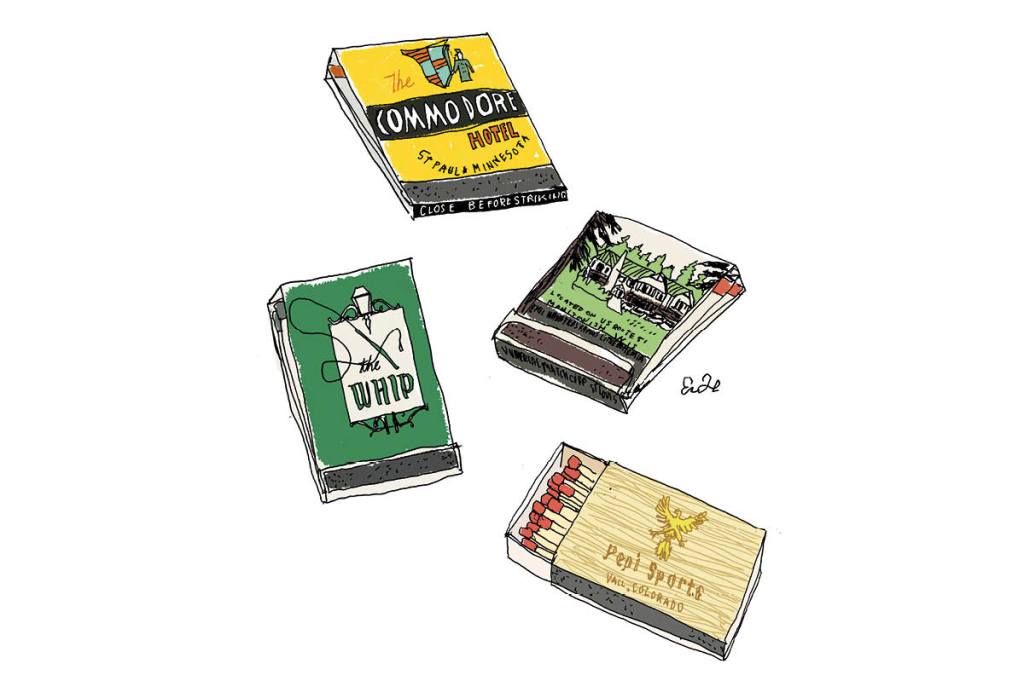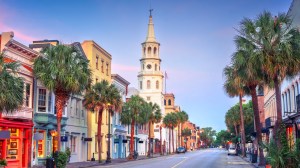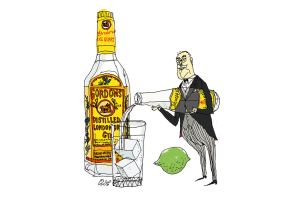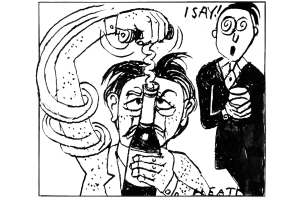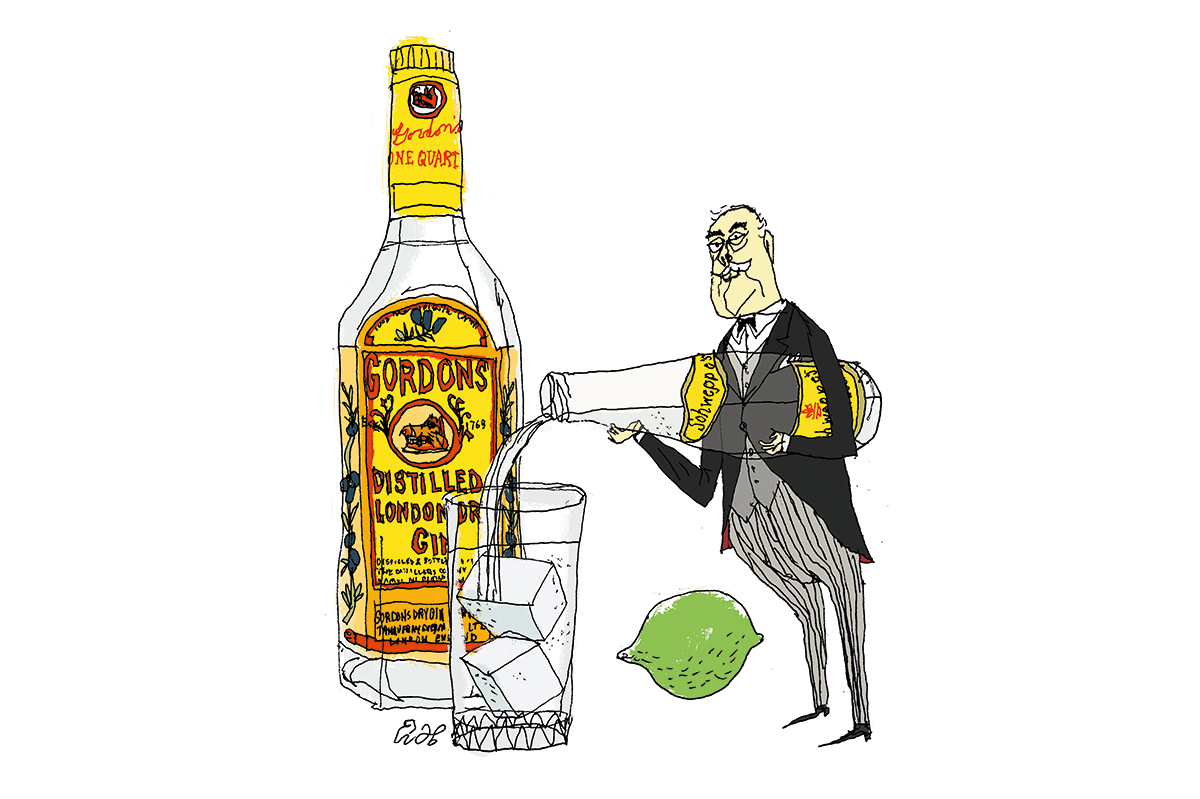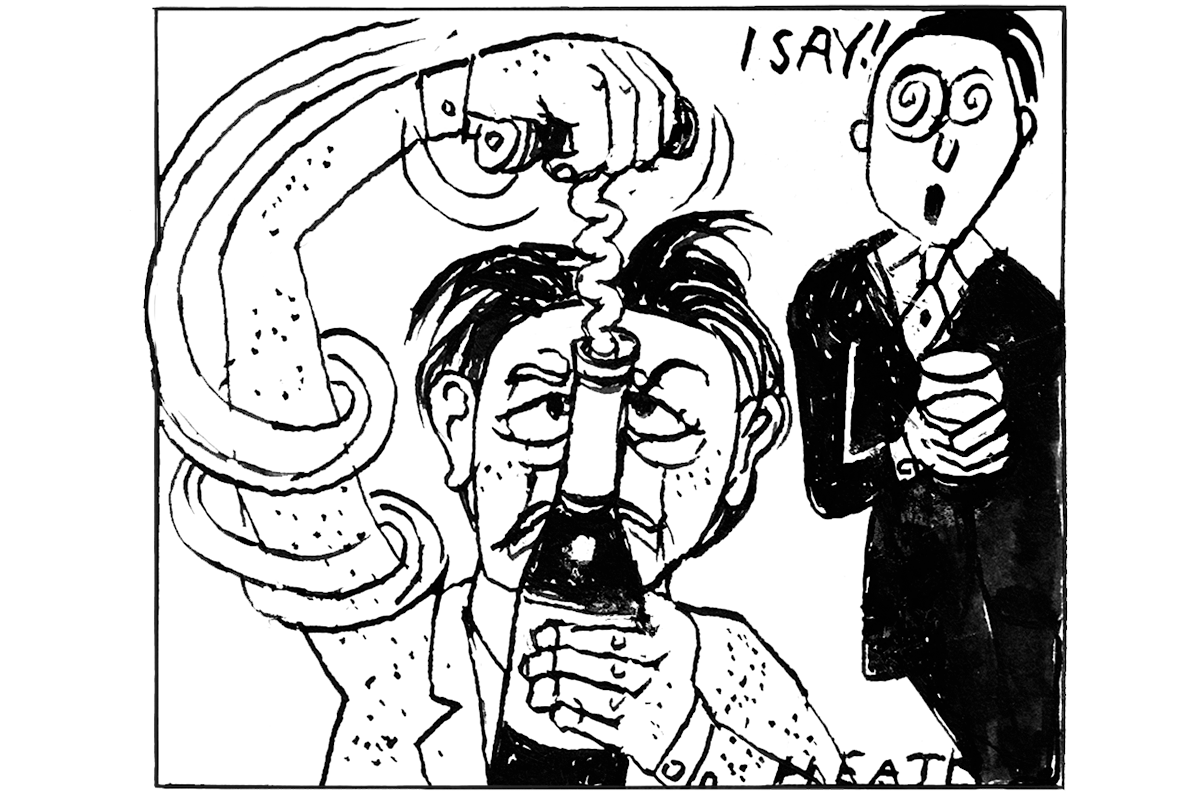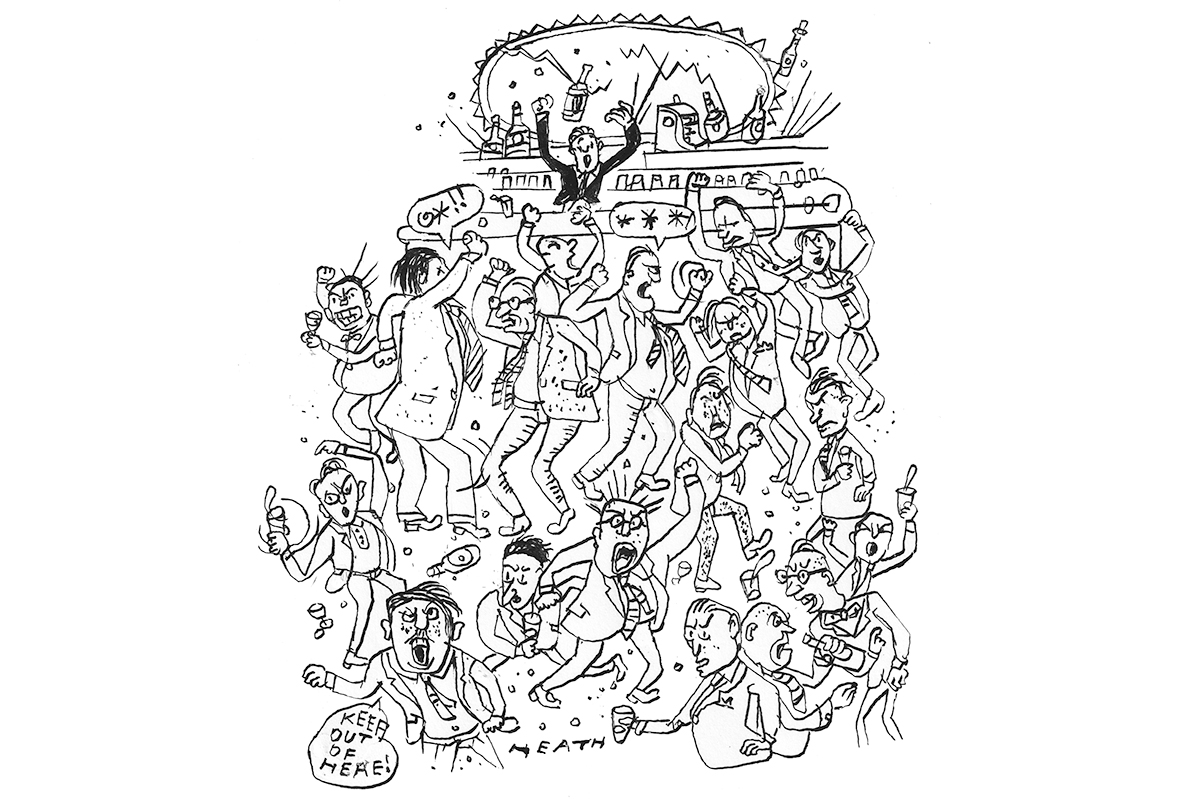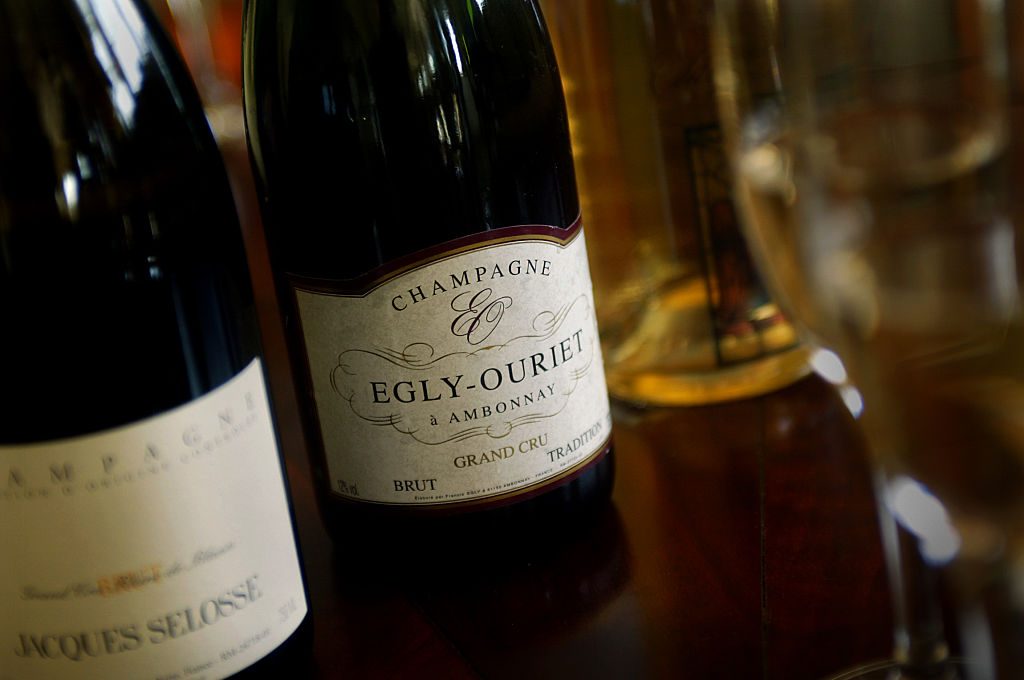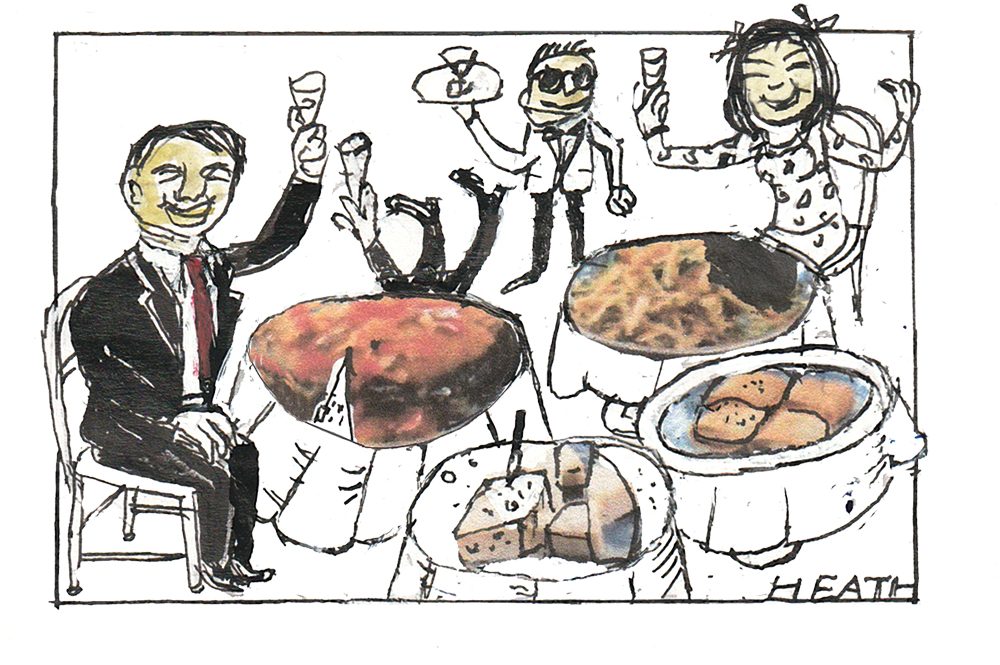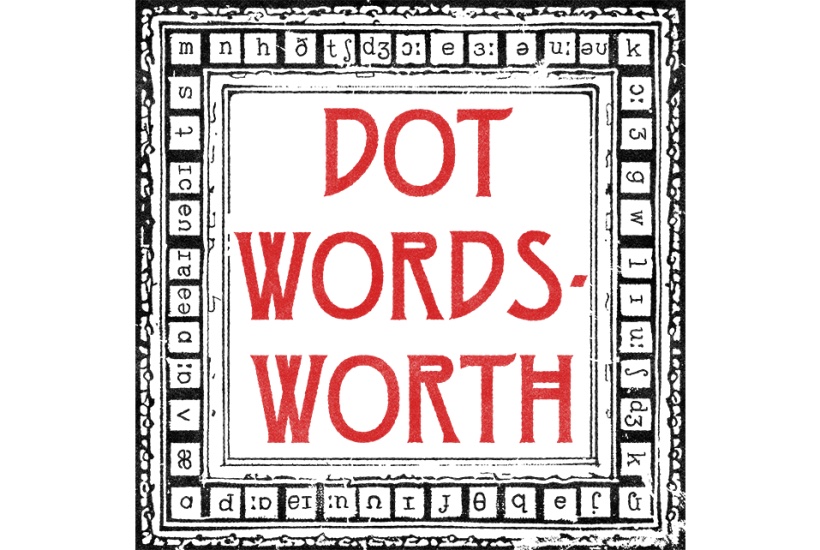I was born in Wisconsin and I’ve learned a curious thing traversing it. There appears to be a state law requiring at least one bar at every intersection of its rural roads. I’ve noticed this most often driving at night: there’ll be a neon sign advertising Old Style or Leinenkugel’s hung in the front window of what looks like a farmhouse living room, and several cars nestled up against the house like sucking pigs. There is something homey about a rural bar. The knotty pine, the “first dollar” framed above the cash register, neighbors ironing out local prejudices and asserting the superiority of the Packers despite any evidence — if anyone’s brave enough to produce some.
Some years ago a neon sign saying “Cocktails” invited us to stop one late winter afternoon at a bar-supper club up near the Michigan state line. We’d been skiing nearby and I required some local color for an article I was writing. This was it.
They had a fireplace wall built of fieldstone hung with copper pots and a bar shaped like a shamrock. Against advice, we ordered Leinies instead of cocktails and walleye instead of steaks. We were the only two customers as I recall, but it was a Monday. We soaked in the atmosphere and watched the light fade on the snowbound lake across the road. I wonder if the place is still there. It’s not my favorite bar, but close. In point of fact, I’m not enough of a purist to think one gem is best or enough of a barfly to cherish them all alike.
There is a charming little place not far from that one, in Hayward, near Mount Telemark, called the Moccasin Bar. Maybe charming isn’t the word. It’s famous for the remarkable glassed-in tableaux that animate its walls. Where most similar bars feature mounted pike and muskies, the Moccasin has remarkable scenes of taxidermied bobcats and raccoons and bears and badgers, fishing and dicing and smoking and boxing and playing cards and otherwise roistering. One scene has a courtroom with Judge Wolf adjudicating the murder of a woodcock. The human habitués are rowdier and less civilized, unsurprisingly.
For some years I was a ski journalist. Favorite ski town bar? Possibly the Whip in Stowe, Vermont. Or Pepi’s Bar in Vail. The St. Bernard at Taos. the Hellroaring Saloon overlooking Whitefish, Montana from acouple thousand feet up. Travel writing is a solo profession and over time I became an aficionado of bars. It’s where I’d write up my day, totaling my vertical feet and runs skied, sorting impressions into sentences I hoped hadn’t been used to describe a similar ski resort the year before. If you’re seated at the bar nobody wonders why you’re alone. And if I looked meditatively into the mirror behind the bottle shelves, no one knew I was eavesdropping, listening for useful testimony.
I have a fondness for literary and historical associations. Back home in Wisconsin, I once stopped at the famous Little Bohemia for a beer and a look around. It’s located back among the pines well off Highway 51 near Manitowish Waters in the state’s far north. This remoteness may have been why John Dillinger was staying there in 1934 when Melvin Purvis and his FBI agents ambushed him anyway, coming in on little cat’s feet. Our midwestern landmarks hosted gangsters instead of George Washington: Dillinger got around, at least for a while, supping and dining and sleeping from Illinois to Wisconsin to Minneapolis, where I live now. My favorite true cocktail bar might be the one in the Commodore Hotel over in St. Paul. It shimmers with mirrors and white art-deco woodwork, just the sort of a place to soothe the rattled nerves of its former patron F. Scott Fitzgerald. The Commodore is tucked in among the immense old mansions of Cathedral Hill — built by robber barons, not bank robbers. A perfectly elegant neighborhood for walking off your martinis. The hotel was only a year old when Scott and Zelda lived there in 1921, waiting for daughter Frances Scott “Scottie” Fitzgerald to be born. Prohibition was in effect but there was a speakeasy in the basement. Sinclair Lewis also lived there for a time.
Nearby is another literary bar at W.A. Frost’s. Before it was a restaurant, Frost’s was the drugstore where Fitzgerald liked to buy his favorite cigarettes. Decades later I spent some pleasant lunchtimes in the bar, writing one of the novels I’ve yet to finish, or reading a book over a hamburger. The playwright August Wilson wrote some of his greatest plays at Frost’s. I saw him there once or twice. We didn’t interrupt each other. I like bars where they leave you alone. A good bar is as private as a confessional.
This article was originally published in The Spectator’s September 2023 World edition.



